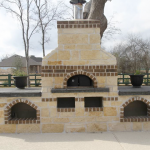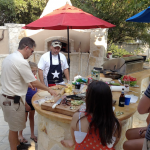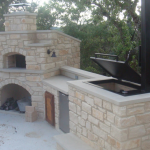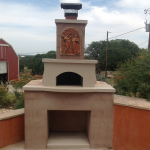Meat Curing – Old World Meets New
One of the benefits of doing things the old way, besides the pride of ownership, is being able to share the experience with friends. I have a friend, not a Facebook kind of friend, but the kind of friend you can call in the middle of the night and say I need you, and he’s already out the door before he asks where you are.
So my friend Eddie grew up on a ranch and now lives on small acreage, enough to have horses as pets, chickens, goats, and the occasional hog, sheep, or turkey. I have never been a hunter, nothing against it, but thanks to Eddie, I have participated in my fair share of farm butchering.
The US Gov. pamphlet on farm butchering that spells it all out. I have slaughtered animals with Eddie before, but this was the first time I did the butchering myself in preparation for curing the meat in a curing unit I made from an old refrigerator.
It may seem disconcerting to hang up a piece of raw meat with nothing but salt to prevent spoilage, but until very recently that is how everyone did it. Salting, brining and smoking were ways people preserved food before electricity and refrigeration.
The key to curing meat is to salt it and provide the proper ventilation and humidity. Cuts of meat need to give up a lot of moisture. Once your cuts of meat have lost about 25% of their weight, the bacteria can’t live. You can store meat longer through salting and drying than you can through refrigeration. I short cycled one of my cuts by breaking it down, adding a sugar/salt cure, and giving it a light smoke. I’ve been sharing it with friends for about a month now to rave reviews.
Traditionally curing meat is done in the cooler months to take advantage of some natural refrigeration. Then by the time warm weather rolls around, the meat is cured enough to take the heat. In our Texas climate, I decided to hedge the bet by making a curing cabinet out of an old fridge. By adding an external thermostat, I can set the fridge to hold mid fifties which is cellar temperature.
Real cured meats have a white coating on the surface. That’s bacteria which is crucial to flavor development. The bacteria growth won’t happen if it’s too cold. The curing process requires ventilation, especially early on for water to evaporate from the meat. A fan or open door when the wind blows creates ventilation. That can be a fan or leaving the door open when the wind is blowing.
When the meat has reached its target weight, I watch the humidity to keep it at 75%. I do this with a pan of salt water in my fridge. Water adds humidity, salt absorbs water, and together they hold the humidity steady.
I cure whole cuts of meat and used only salt and sugar. If I start doing sausages I will add curing salt with nitrates added. I know we all learned nitrates are bad, but botulism is worse.
For additional tips on curing meat check out Hank’s blog and the Morton’s link on curing salts. http://www.culinate.com/columns/ask_hank/curing_meat and http://www.mortonsalt.com/for-your-home/culinary-salts/meat-curing-methods













